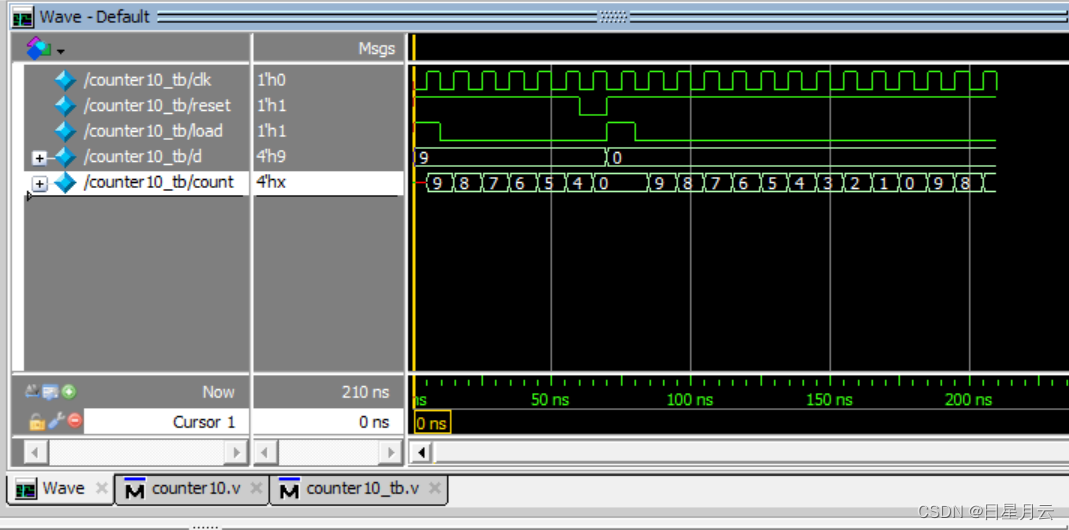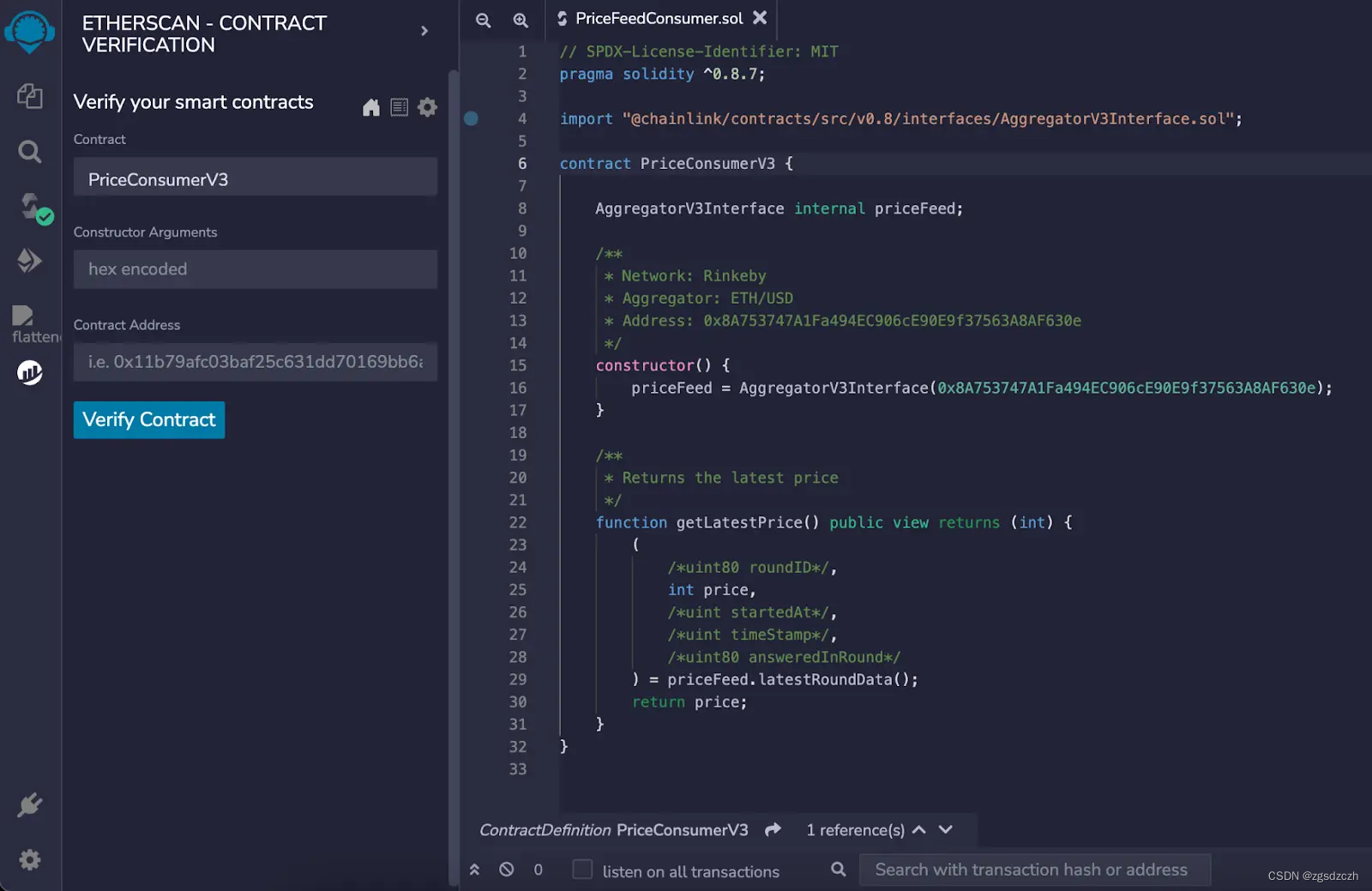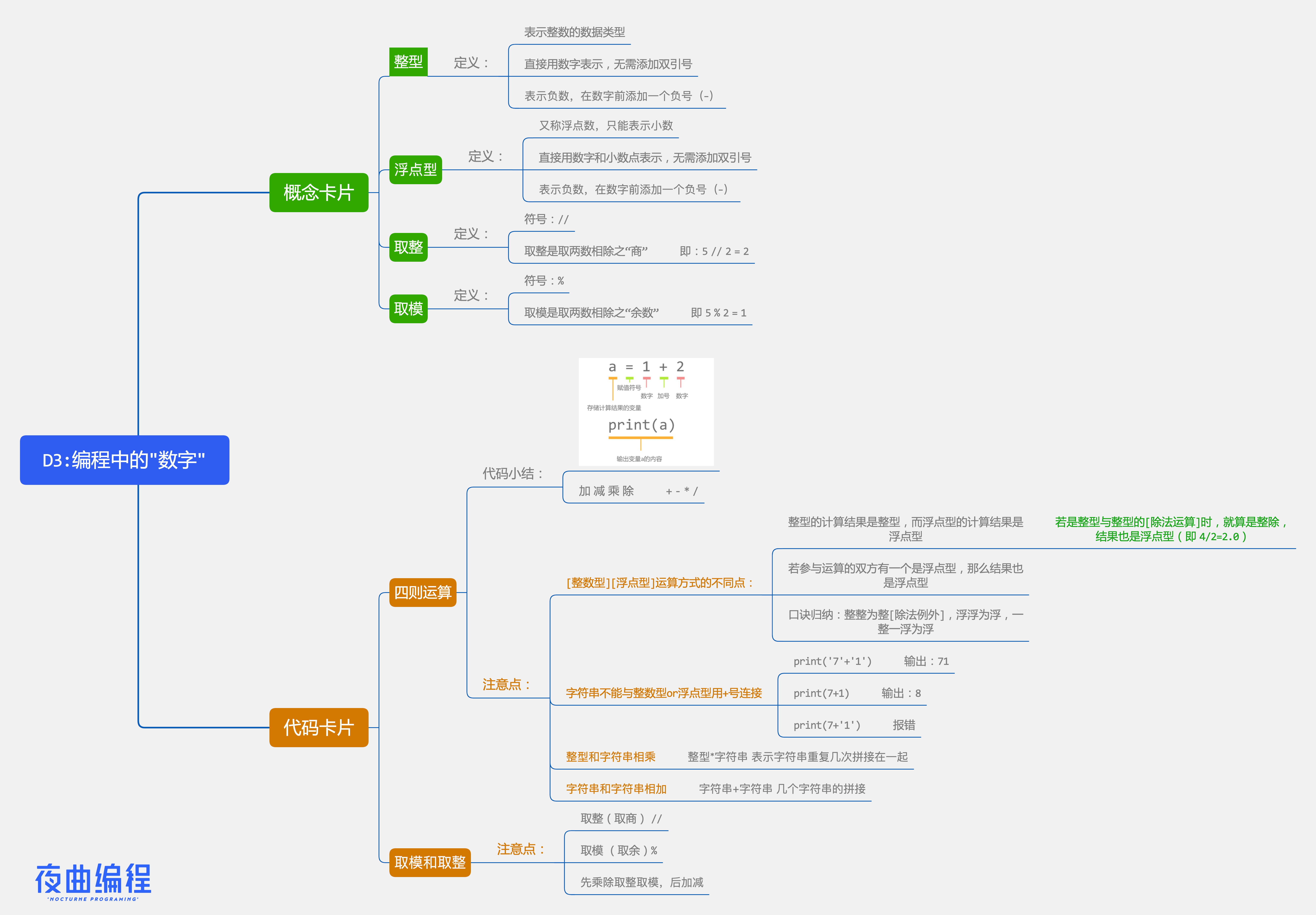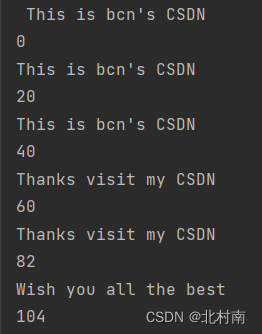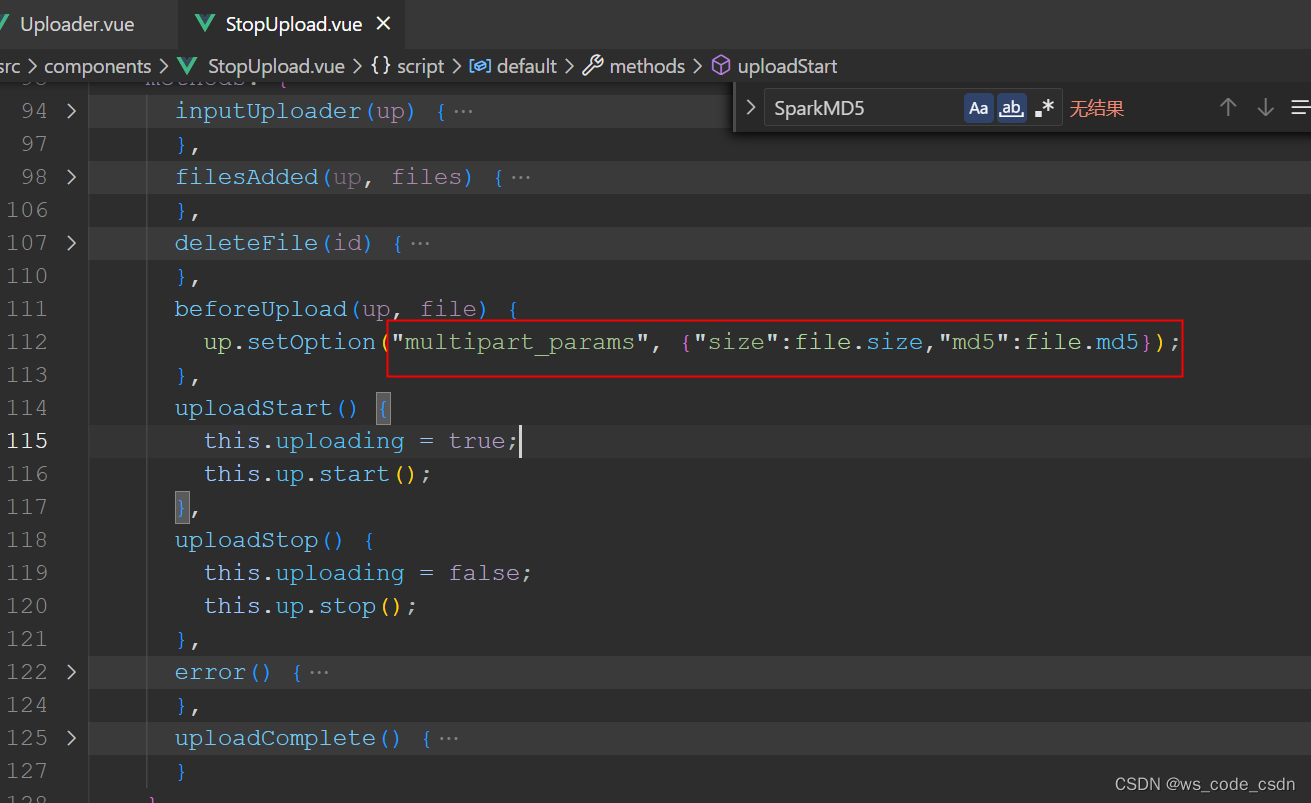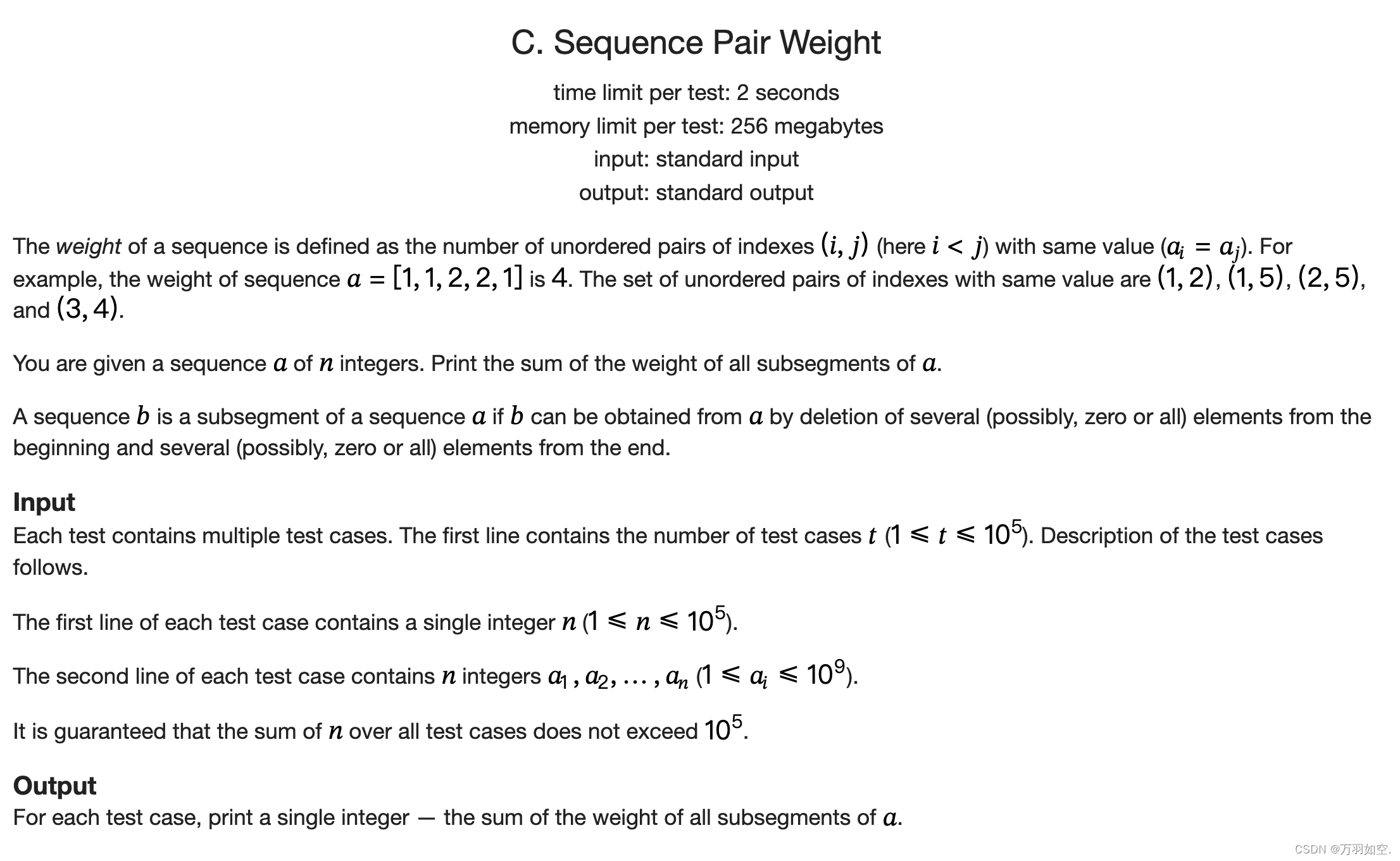
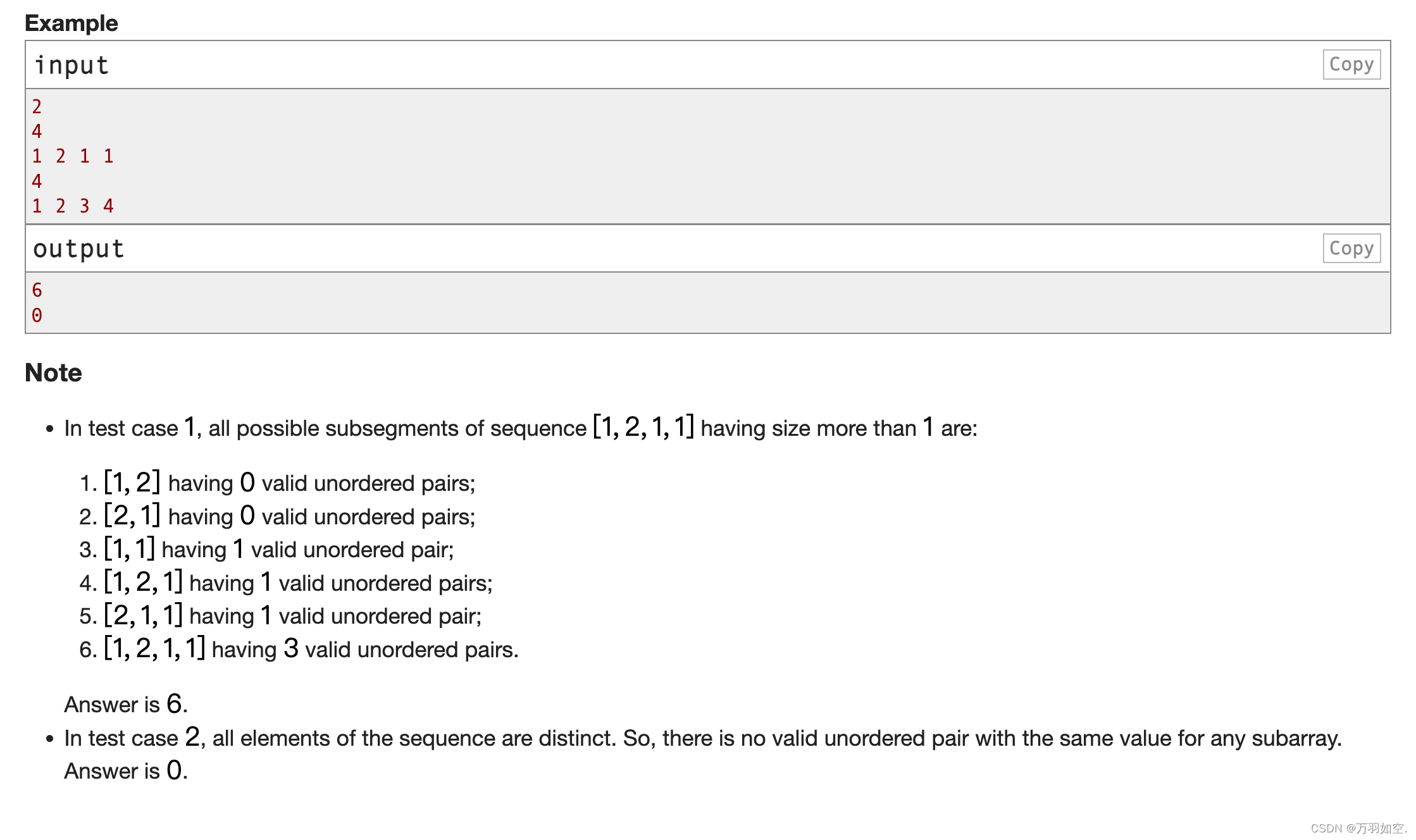
翻译:
序列的权值定义为具有相同值(𝑎𝑖=𝑎𝑗)的无序索引对(𝑖,𝑗)(这里𝑖<𝑗)的数量。例如,序列𝑎=[1,1,2,2,1]的权值为4。具有相同值的无序索引对的集合是(1,2),(1,5),(2,5)和(3,4)。
给您一个𝑛整数的序列𝑎。打印𝑎的所有子段的权重之和。
序列𝑏是序列𝑎的子段,如果可以通过删除开始部分的几个(可能是零或全部)元素和结束部分的几个(可能是零或全部)元素从𝑎获得𝑏。
输入
每个测试包含多个测试用例。第一行包含测试用例的数量𝑡(1≤𝑡≤105)。测试用例的描述如下。
每个测试用例的第一行包含一个整数𝑛(1≤𝑛≤105)。
每个测试用例的第二行包含𝑛整数𝑎1,𝑎2,…,𝑎𝑛(1≤𝑎𝑖≤109)。
可以保证所有测试用例中𝑛的总和不超过105。
输出
对于每个测试用例,打印一个整数—𝑎的所有子段的权值之和。
例子
inputCopy
2
4
1 2 1 1
4
1 2 3 4
outputCopy
6
0
请注意
在测试用例1中,序列[1,2,1,1]的大小大于1的所有可能的子段为:
[1,2]有0个有效的无序对;
[2,1]有0个有效的无序对;
[1,1]具有1个有效的无序对;
[1,2,1]具有1个有效的无序对;
[2,1,1]具有1个有效的无序对;
[1,2,1,1]有3个有效的无序对。
答案是6。
在测试用例2中,序列的所有元素都是不同的。因此,对于任何子数组,都没有具有相同值的有效无序对。答案是0。
思路:所有子段可能,因为有有效的的无序对,对答案才有贡献。然后是所以子段和,我们可以分别对两边进行扩展,这样就是左右两边相乘,累加,就可以得出答案。
代码:
#include <iostream>
#include <algorithm>
#include <string.h>
#include <string>
#include <math.h>
#include <stdio.h>
#include<vector>
#include<queue>
#include<map>
#include<set>
#include<tuple>
#include<numeric>
#include<stack>
using namespace::std;
typedef long long ll;
int n,t;
inline __int128 read(){
__int128 x = 0, f = 1;
char ch = getchar();
while(ch < '0' || ch > '9'){
if(ch == '-')
f = -1;
ch = getchar();
}
while(ch >= '0' && ch <= '9'){
x = x * 10 + ch - '0';
ch = getchar();
}
return x * f;
}
inline void print(__int128 x){
if(x < 0){
putchar('-');
x = -x;
}
if(x > 9)
print(x / 10);
putchar(x % 10 + '0');
}
ll w;
void solv(){
map<ll,ll>q;
cin>>n;
ll ans=0;
for (int i =1; i<=n; i++) {
cin>>w;
ans+=q[w]*(n-i+1);
q[w]+=i;
}
printf("%lld\n",ans);
}
int main(){
ios::sync_with_stdio(false);
cin.tie(); cout.tie();
cin>>t;
while (t--) {
solv();
}
return 0;
}


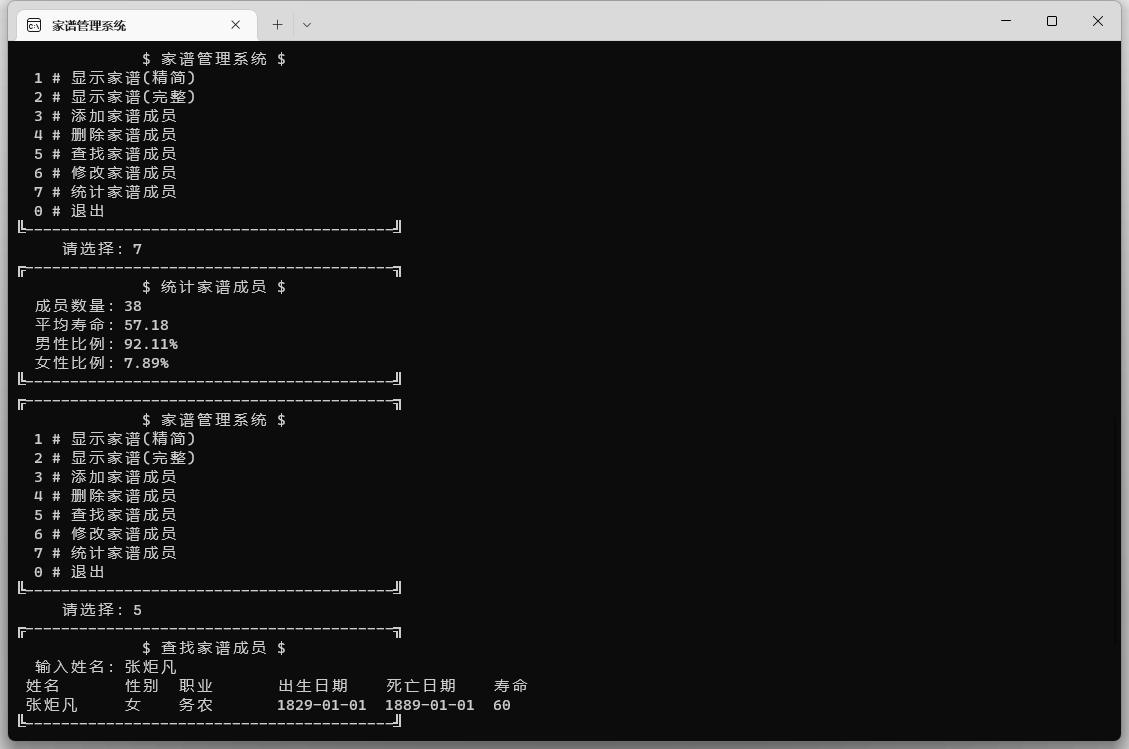
![[Java] 从内存的角度去理解ThreadLocal如何把不同线程间的访问隔离开来?ThreadLocal的内存泄露问题是什么?如何避免?](https://img-blog.csdnimg.cn/8f381e24ab3c408c95d40903cae4e741.png)



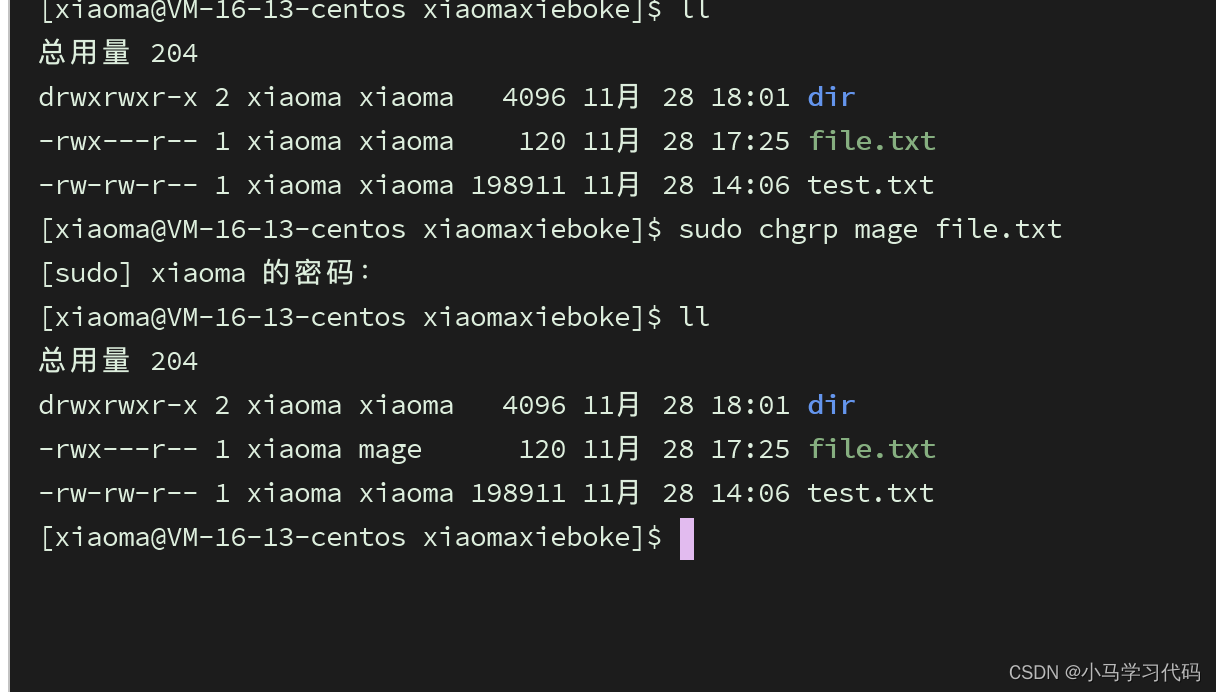

![[ECCV2022]Language-Driven Artistic Style Transfer](https://img-blog.csdnimg.cn/4d00cb6417044464b26b3569ad21eca4.png)
